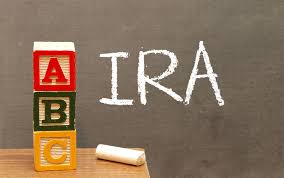What is Spousal IRA?

Spousal IRAs allow spouses with no income or very limited income to have a personal retirement account. Spousal IRA allow couples to open two personal retirement accounts together - one for one - and each is subject to a separate personal limit.
Spousal IRA Basics
In most cases, a Spousal IRA works the same way as a traditional IRA.
For example:
Contribution limit: For 2015 and 2016, non-working spouses can contribute to their spouses and deduct up to $5,500. If a non-working spouse is 50 years of age or older, the contribution increases to $6,500.
Account type: A spouse IRA does not need to be set up as a stand-alone account. If a non-working spouse has an existing IRA in his or her previous career, the account may continue to provide a spouse's IRA contribution. Like other personal retirement accounts, the Spousal IRA can be a self-directed investment account.
Tax Deferred Investment Income: Like other individual retirement accounts, the return on investment of the Spouse IRA may be taxed until deferred. Whether this applies to contributions to your account is tax-exempt.
Investment options: Spouse IRA can invest in an almost unlimited number of investments, including stocks, bonds, mutual funds, exchange-traded funds and real estate investment trusts. The only investment you can't make is a short list of banned IRA investments that few people are interested in holding.
Resources: IRA Investment Selection List
Withdrawal rules: You can withdraw from the IRA from your spouse at 59 1/2 years old. If you start taking it earlier, you may be fined 10% by the IRS for early withdrawals. Spouse IRAs also need to meet the required minimum allocation (RMD), which means you must start distributing once you reach 70 1/2 years of age.
Income tax return status: In order to qualify for the spouse IRA, a couple must jointly submit a married application. This makes sense, as the spousal IRA relies on the income status of the working spouse. Conversely, if you submit a married application separately, a spouse's IRA is not allowed.
Account ownership: Although a working spouse must provide income to the spouse IRA, the account is an independent account owned entirely by a non-working spouse who will receive the benefits allocated by the plan upon retirement. As with all retirement plans, the spousal IRA does not share ownership.
Deadline: You can make contributions to your spouse's IRA before the tax return deadline for the quota tax year. For example, in order to contribute to the 2015 spouse IRA, you can advance your contribution to 18 April 2016, which is the 2015 application deadline.
Although there are general similarities between spouse IRAs and traditional IRAs, there is one major difference that makes spouse IRAs stand out.
Spouses don't need to have an income.
The general rule of any type of IRA is that you must have income to be able to contribute to the program. Income can come from work, business, or other forms of income that require active participation. Many people know this is the rule for individual retirement accounts, so stay-at-home moms, housewives and other spouses without an outside income think they don't have a retirement savings option.







